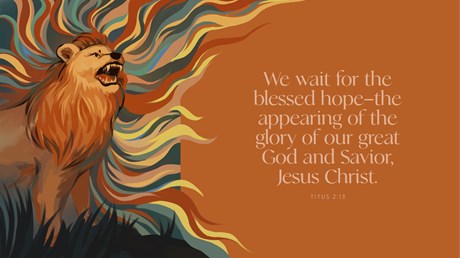An Advent reading for November 28.

Read Titus 2:11–14 and Revelation 1:7–8.
We begin at the end. Not at the manger. Not with the Magi offering gifts of worship or the shepherds rejoicing in wonder. Not with Mary’s visit to Elizabeth or Joseph’s angelic dream. We begin not with Christ’s First Advent, but with his Second. Like a mixed-up storybook with the chapters all out of order, the season of Advent—and indeed the entire Christian liturgical year—starts with the end.
It’s not a tame, pleasant, “they all lived happily ever after” ending. It’s beautiful and fearful, awesome and terrifying. It’s an ending that expands far beyond the limits of our human comprehension: He will come again in glory to judge the living and the dead, and his kingdom will have no end.
Advent begins with the eschaton: with Christ’s power and glory, his righteous judgment, his ultimate victory and eternal reign. It shocks us out of our sentimentality about Christmas, inviting us into the far grander and more expansive story of the cosmos, in which the incarnate God who was laid in a manger and went to the cross will one day sit on the throne, and every knee will bow and every tongue confess he is Lord (Phil. 2:6–11).
Like Isaiah’s response to his vision of God’s holiness, our only natural response to contemplating the wonder and glory of Christ’s second coming is to say, “Woe is me! I am a person of unclean lips” (Isa. 6:1–5). As we ponder Christ’s holiness and power, we’re drawn to our knees in repentance and humility. And like Thomas in his encounter with the risen Christ, we too proclaim, “My Lord and my God!” (John 20:28).
The Second Advent ...
from Christianity Today Magazine
via


.gif)

.gif)
.gif)
